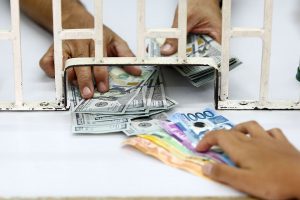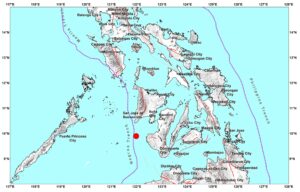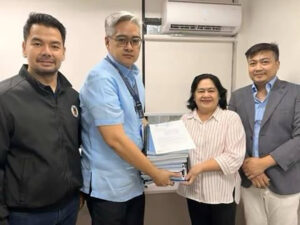By Katherine K. Chan
STRICTER visa and immigration policies in the United States could slow demand for Filipino workers and potentially dampen remittance inflows, analysts said.
Pantheon Macroeconomics Chief Emerging Asia Economist Miguel Chanco said a weakening US labor market has started to affect remittances from US-based migrant Filipino workers.
“We’re arguably already starting to see the softening in the US job market impact remittances from Filipinos there,” Mr. Chanco told BusinessWorld in an e-mail.
He noted that the growth in remittances from US-based Filipinos has slowed to 0.5% in August, “a far cry from its previous peak of 4.2% in the middle of last year.”
“This ongoing slowdown certainly poses a downside risk to the BSP’s (Bangko Sentral ng Pilipinas) 3% growth assumption for remittances,” he added.
In August, cash remittances grew by 3.2% to $2.977 billion from $2.885 billion a year ago.
This brought the cumulative cash remittances in the January-to-August period to $22.909 billion, 3.1% higher than the $22.217 billion seen in the same period last year. The bulk or 40.4% of the remittances came from US-based Filipino workers.
The BSP projects cash remittances to increase by 3% to $35.5 billion this year.
Since assuming office in late January, US President Donald J. Trump has tightened border enforcement, ordered a crackdown on illegal immigration and has moved to limit foreign workers.
“Such policies tend to make OFWs more cautious, possibly reducing remittance amounts or sending frequency,” John Paolo R. Rivera, a senior research fellow at the Philippine Institute for Development Studies, said in a Viber message.
“Given that the US is a major source of Philippine remittances, these developments could make it harder to hit the BSP’s 3% growth target for remittances,” he added.
VISA ISSUEMeanwhile, the International Monetary Fund (IMF) said the US government’s move to impose a $100,000 fee on new H-1B visas may pose a risk to remittances from the US.
“The fee on H-1B visas could impact remittances from the US, but we do not have specific estimates at this point,” an IMF spokesperson told BusinessWorld in an e-mail, adding that they will monitor further developments and evaluate its impact once additional information becomes available.
In September, Mr. Trump issued a proclamation that required employers who are sponsoring foreign-born workers through the H-1B work visa to pay a one-time fee of $100,000 fee to the US government.
H-1B visas allow foreign workers to temporarily work for US companies in industries such as science, information technology, engineering and finance. The fees are typically shouldered by employers.
Angelo B. Taningco, research head and chief economist at Security Bank, said stricter US immigration and visa policies may have a moderate to minimal effect on overseas Filipino workers (OFWs) remittances.
“I think OF remittance flows from US to the Philippines would be moderately impacted by restrictive US immigration policy, but minimally affected by the hefty $100k H-1B visa fee because there are not many Filipino H-1B visa applicants,” he told BusinessWorld in an e-mail.
Workers from India account for the majority or about 70% of the total H-1B visa approvals.
On the other hand, Filipinos hold less than 1% of the total number of H-1B visas, according to IT & Business Process Association of the Philippines President and CEO Jonathan R. Madrid.
Nonetheless, Mr. Rivera said the new visa fee could reduce future remittance inflows by discouraging new applicants.
“The new $100,000 fee on new H-1B visa petitions raises the cost of working legally in the US, which could discourage new entrants or slow the growth of that skilled migrant stock, thus dampening future remittance volumes,” he said.
Reinielle Matt M. Erece, an economist at Oikonomia Advisory and Research, Inc., noted that lower remittances could hit the economy as it might limit household spending.
“Lower remittances may show lower disposable income of families with OFWs, thus lower disposable income may result in lower spending,” he said in a Viber message. “Lower spending results in slower jobs and income growth within the domestic economy.”
Mr. Rivera also said weaker inflows could also put a strain on foreign exchange reserves as well as put more pressure on the peso and external balance.
“The Filipino diaspora in the US is still the largest globally — by far — so I highly doubt that making it difficult for new entrants to come into the country in the future will instantly affect the US’ position as the largest origin market for remittance inflows,” Mr. Chanco said.
“For now, with total remittance growth holding fairly steady at 3%, these aforementioned developments in the US shouldn’t have a significant bearing on the Philippines growth prospects,” Mr. Chanco added.






